No one really knows how long this pandemic will stick around or what the “new normal” will look like after this is all over.
This is particularly challenging for businesses, as they’re reopening in this in-between phase when cases are unfortunately still rising.
Businesses now have to juggle the realities that consumer behavior has radically changed alongside new policies and procedures to keep everyone as safe as possible.
In this post, we’re going to outline some strategies you can use to reopen your business:
- Build a reopening playbook
- Default to online whenever possible
- Prioritize contactless or curbside pickup options for in-person activities
- Keep people safe in your establishment
- Practice social distancing
- Enforce capacity limits
- Stock up on personal protective equipment (PPE)
- Clean everything
- Communicate the changes and policies you put in place with your team, customers, and prospects
- Make it easy for people to change or cancel their plans
- Update your employee sick leave policies
- Minimize your legal and liability risks
- Create and/or update liability waivers and consent forms
- Screen all employees and guests before they enter your establishment
- Enable contact tracing
Build a reopening playbook
You’re going to be making a lot of changes over the coming weeks. Building a playbook can help you keep everything in one place, which helps with creating a consistent customer experience as well as training your team.
Start by mapping out the entire customer journey. What this looks like depends on the type of business you’re running.
Doing this will help you account for all of the touchpoints a customer has with you from landing on your website and stepping inside your venue to buying a product or service and afterward.
After all, you can’t know what you need to change or improve on unless you fully understand what’s been done in the pre-pandemic past.
Now, you can create sections of your playbook based on key customer interactions. For example, you might have one section on website changes and another about your new curbside pickup process.
Pro Tip
Instead of creating this playbook from scratch, the CDC has created a bunch of helpful checklists you can use as a starting point.
Default to online whenever possible
The safest option is to move anything you can online.
This could be selling items through an e-commerce platform, like Shopify, instead of your brick-and-mortar shop; creating online order forms; delivering food through delivery apps like Instacart, DoorDash, and Uber Eats; or providing helpful service using videoconferencing platforms.
Prioritize contactless or curbside pickup options for in-person activities
When online isn’t possible, the next best alternative is contactless or curbside pickup options.
My local grocery store has had curbside pickup for well over a year. I used to think it was the dumbest thing ever. Why would you drive all the way to the grocery store to sit in your car and wait for someone to bring out your groceries when you can just go inside and get them yourself? Now, in a pandemic, I’ll drive 15 minutes out of my way to go to a grocery store with a better curbside pickup system.
Why am I sharing this story?
Because consumer behavior has shifted radically in the last three months. The more you can adapt to the “new normal” that we’re living in, the better off your business will be.
Curbside pickup requires new systems and processes. However, it’s something that many grocery stores, restaurants, retail establishments, and even bars have adopted. (Curbside pickup at bars is one of the few silver linings from this pandemic. Drive-through margaritas, anyone?)
Not all businesses will require such drastic operational changes. A small tactic like prioritizing contactless payments, such as Google Pay and Apple Pay, or having customers pay in advance from their phone or laptop, can go a long way, since you don’t have to exchange cash or credit cards.
Keep people safe in your establishment
While people are getting creative these days with curbside pickup and drive-through options like movie theaters, birthday parties, and even weddings, let’s face it: There are some shopping excursions and activities that must take place in person.
Practice social distancing
This is where practicing social distancing, limiting crowds, and keeping people at least 6 feet apart, whenever possible, is crucial.
Evaluate the length of time people will be there as well as the risk level to decide which precautions you need to take. After all, there’s a big difference between drunk people singing and dancing in a small bar for four hours vs getting your hair cut vs leading a private zipline tour for a group of people who live in the same household.
Each of these activities carries a different level of risk, and each requires different enforcement protocols for your team.
The drunk people at the bar are engaging in a high-risk activity since they are in groups and can’t wear masks while they’re drinking.
A salon can practice social distancing up to a certain extent, requiring all employees and clients to wear masks. Obviously, a hairdresser can’t cut a client’s hair from 6 feet away. However, you can ensure that all of your clients practice social distancing. Have people wait in their cars when they arrive, add plexiglass barriers between stations and at the front desk, and make sure there are at least 10 feet between all clients.
A zipline tour company that’s holding only private excursions is even lower risk. They have the added benefit of being outside where it’s much easier to practice social distancing. Also, everyone can wear masks.
Enforce capacity limits
Let’s go back to the bar example. While you might not be able to get drunk people to wear masks or stop crowding around tables, you can control how many people you let into the bar.
A good starting point is to calculate the number of people who can safely be in your venue and still maintain a distance of 6 to 10 feet.
Stock up on personal protective equipment (PPE)
Whether you’re a restaurant, a doctor’s office, or a hair salon, there are some supplies you’re going to need for the foreseeable future, including
- Disposable face masks
- Disposable gloves
- Hand sanitizer
At minimum, you should have enough for your team to be able to do their job in a clean environment.
It goes without saying that the type of PPE gear you buy should match the risk level of the activity. For example, you don’t need to stock up on N95 or K95 masks for all of your fast-food workers to do their jobs effectively. However, if you run an urgent care clinic, you absolutely should have K95 or N95 masks in stock for the doctors and nurses who are diagnosing and treating COVID-19 patients.
Clean everything
Now isn’t the time to save money or cut corners on cleaning. While cleaning procedures will vary based on the type of business you run, here are some general best practices:
- Wipe down all high-touch surfaces — like counters, door handles, sinks, and toilets — with a disinfectant cleaner multiple times a day.
- Set up automatic hand sanitizer dispensers at the entrance, in/near the restrooms, and in common areas.
- Install plexiglass barriers between cashiers and other front-of-house workers and customers.
- Make sure all customers and employees wear face masks.
- If serving food and drinks, use paper products and menus instead of reusable items.
- Wash and disinfect any item immediately after it comes in contact with someone who is infected with COVID-19.
Communicate the changes and policies you put in place with your team, customers, and prospects
While we all have different tolerance levels for risk, everyone is experiencing the same threat. Many will understandably be anxious about venturing out. Communicate what you’re doing to keep people safe. This builds trust and confidence.
Two great places to start are changes/cancellations and employee sick leave policies.
Make it easy for people to change or cancel their plans
The last thing you want is someone coming to your venue who is COVID-19 positive or was recently exposed to a positive patient because they don’t want to lose their $50 dinner reservation or $400 plane ticket.
The easier you can make it for someone to change or cancel their plans (ideally all online), the better it is for everyone involved.
In addition, if you’re worried about the potential for large numbers of refunds, you can start by offering store credit or gift cards.
Update your employee sick leave policies
Just like you don’t want customers showing up sick, you really don’t want employees feeling like they have to “tough it out.” The best way to prevent this is to pay them their normal rate for the duration of their quarantine and not penalize them in any way for taking sick leave.
Minimize your legal and liability risks
The hard truth is that you can take all of the precautionary measures in the world, and still, something bad can happen. Because of this, it’s always a good idea to protect yourself and your company from any costly lawsuits or liability risks.
Create and/or update liability waivers and consent forms
Signing waivers is already a best practice for customers and guests who participate in many contact sports and adventure excursions.
Organizations that already have waiver policies in place have a leg up. If you already require customers to sign a waiver, it’s a good idea to add a few lines educating people about the changes you’re making regarding COVID-19 as well as acknowledging the risks in order to limit your business’s liability.
You should also switch to digital waivers and liability forms instead of paper forms. This is not only more efficient and environmentally friendly, but it’s also safer since you’re minimizing germs by not sharing pens, papers, and clipboards.
Many more businesses — like hair and nail salons — are turning to liability waivers for the first time. Luckily, there are many templates — like this one we created specifically for salons or this general waiver template — you can use as a jumping off point.
Note: These templates can save you a boatload of time. However, it’s still a good idea to get a lawyer to read through your waiver just to make sure you’re covered.
Besides removing some legal risks, waivers also allow you to collect valuable customer information, such as names, email addresses, and birthdays. You can sync this information with your CRM and then reengage them in any future marketing initiatives.;
Screen all employees and guests before they enter your establishment
Whether you own a doctor’s office, a hair salon, or a busy restaurant, it’s a good idea to use all of the following: self-screening employee questionnaires, health and safety checklists, and contactless temperature guns.
For example, when employees clock in for work each day, you should take their temperature with a contactless temperature gun and have them fill out a questionnaire to assess any COVID-19 risks. Here’s an example of an employee questionnaire template you can use.
In addition, create detailed protocols for screening all customers, like going through a screening checklist and mandatory temperature checks at the door.
Put in place contingency plans in case an employee or customer tests positive for COVID-19. This includes everything from how you’re going to disinfect the place, trace and isolate anybody who came in close contact with the infected person, and handle customer and team communication, including change and refund requests.
Enable contact tracing
Another way to help keep your team and customers safe, as well as protect yourself, is to keep great records. If you have detailed notes on every single person who enters your establishment, including dates and times, it will make it easier to reach out in the event they might have been exposed to COVID-19.
No one knows how long this pandemic will last or what the “new normal” will be after all of this fades. However, the one thing you can do is put plans in place early on to help keep more people safe.



























































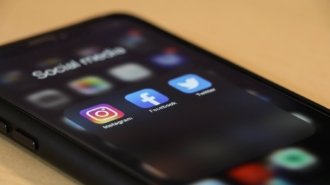



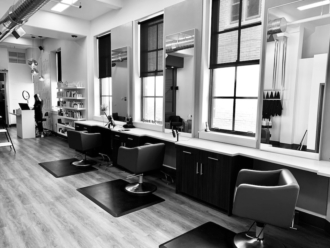

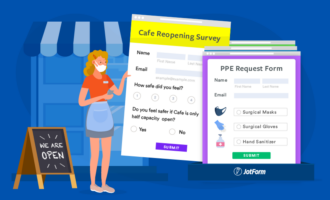
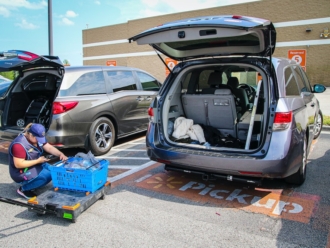





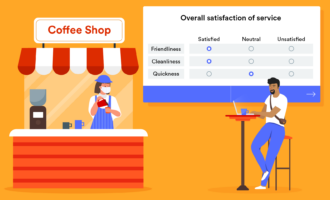







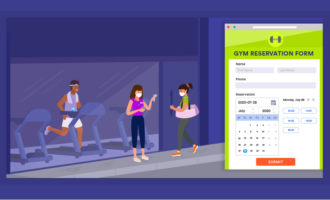


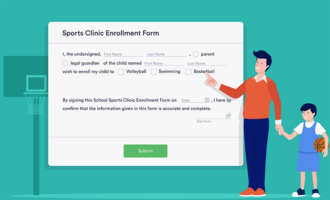
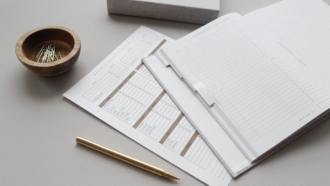

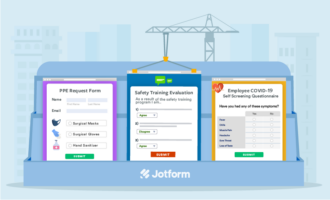




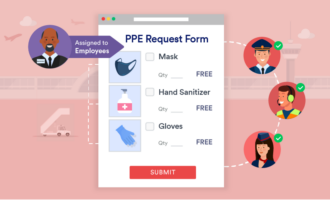

Send Comment:
4 Comments:
More than a year ago
I've been preparing to reopen for around a month right now. My business was considered non-essential and we thought we had the means to weather the storm but as the numbers aren't going down anytime soon, we'll be reopening in a couple of weeks. I had followed other guides about how to reopen safely but never thought about preparing a playbook. We'll be providing curbside pickups and online deliveries for some of our goods but our premises will be open. I'm mostly concerned for my team and my number one priority is to keep them safe while they keep on working. We'll be tracing every step customers make to ensure that there are no weak spots in our processes. I can only hope that we can operate safely. Please wear masks people.
More than a year ago
Am glad to be part of you.
More than a year ago
So the Mask or facial covers can stay on
More than a year ago
I thought of a idea for people to use straws to keep them safe perhaps it would work ?